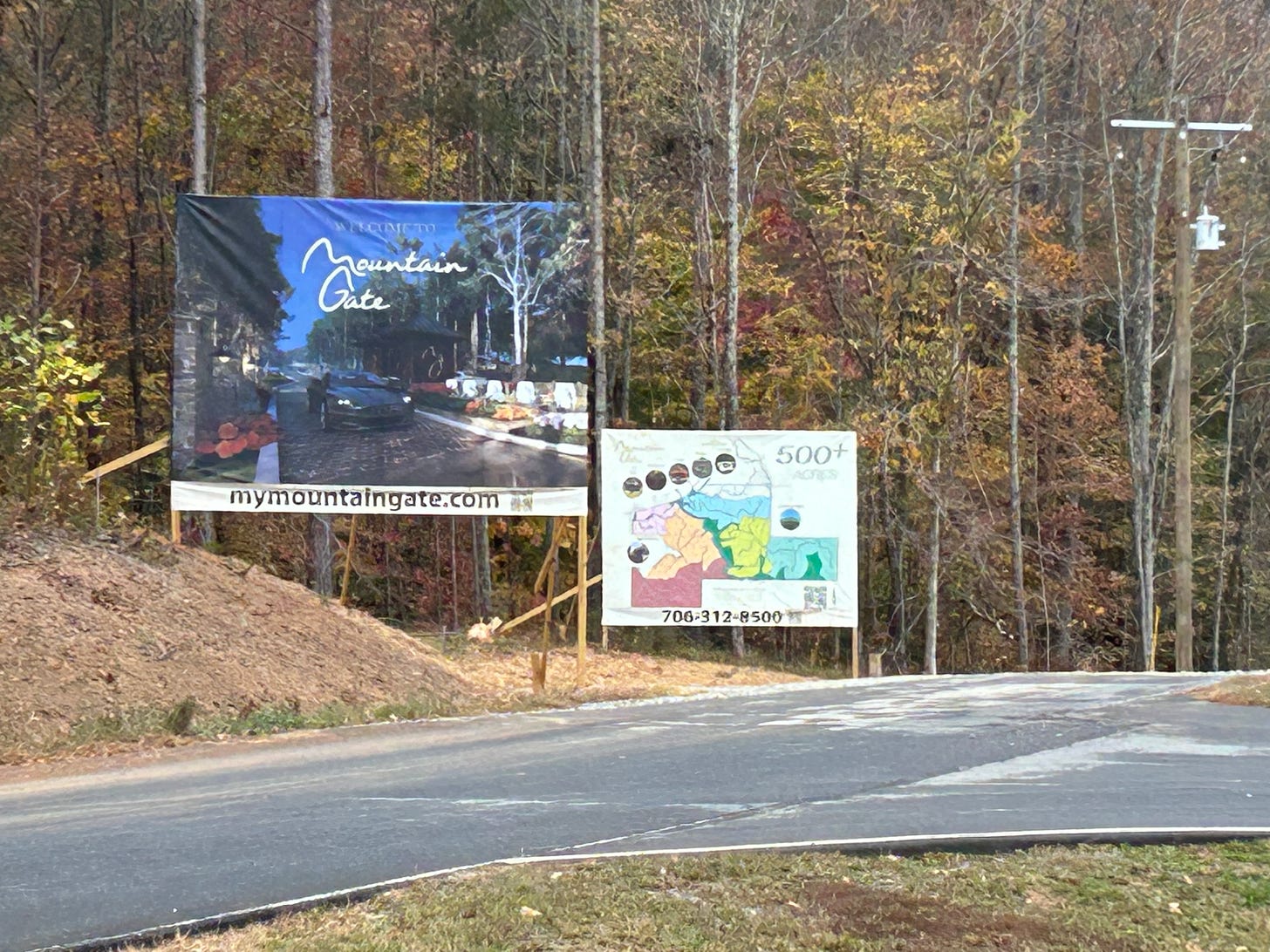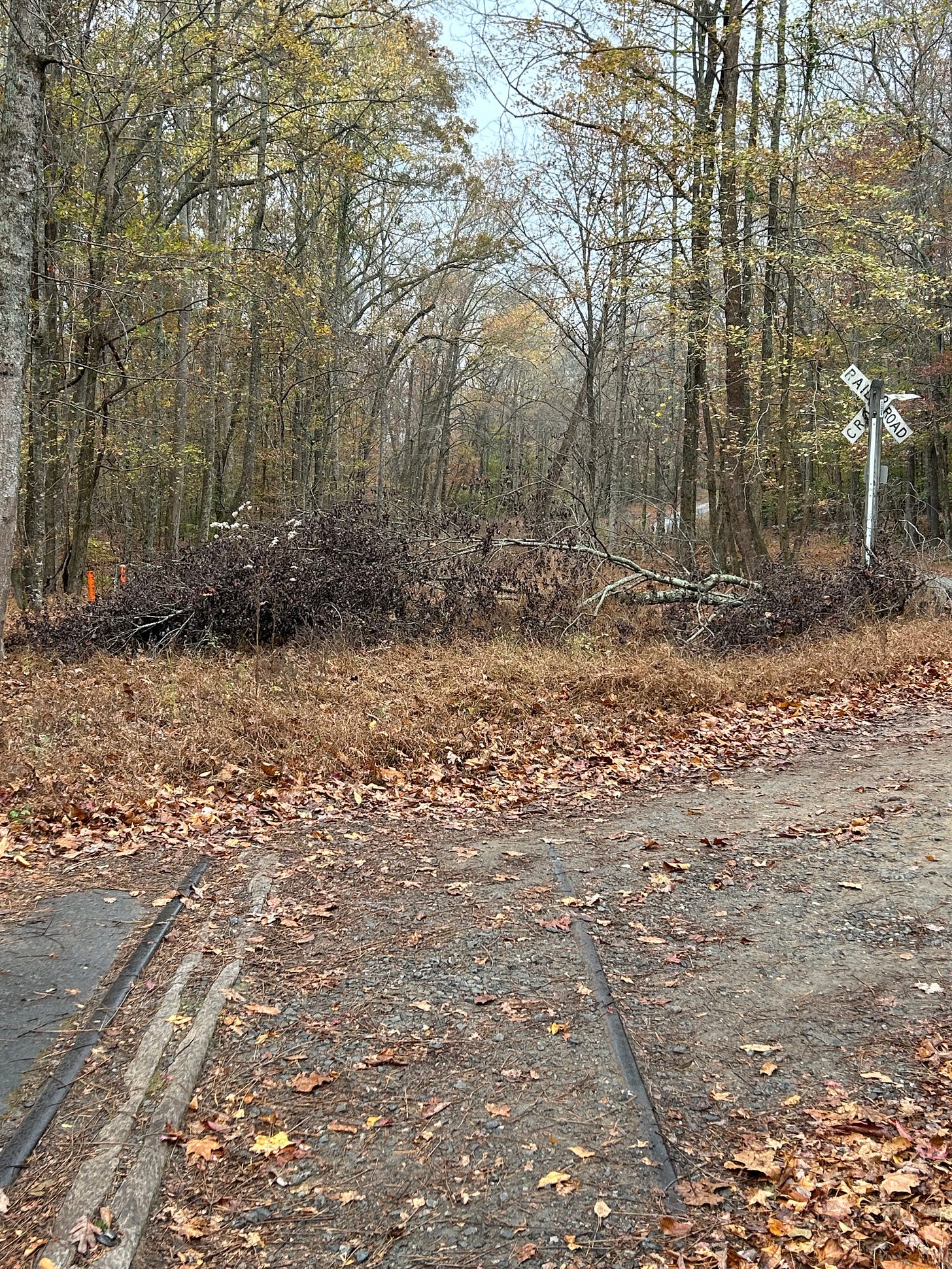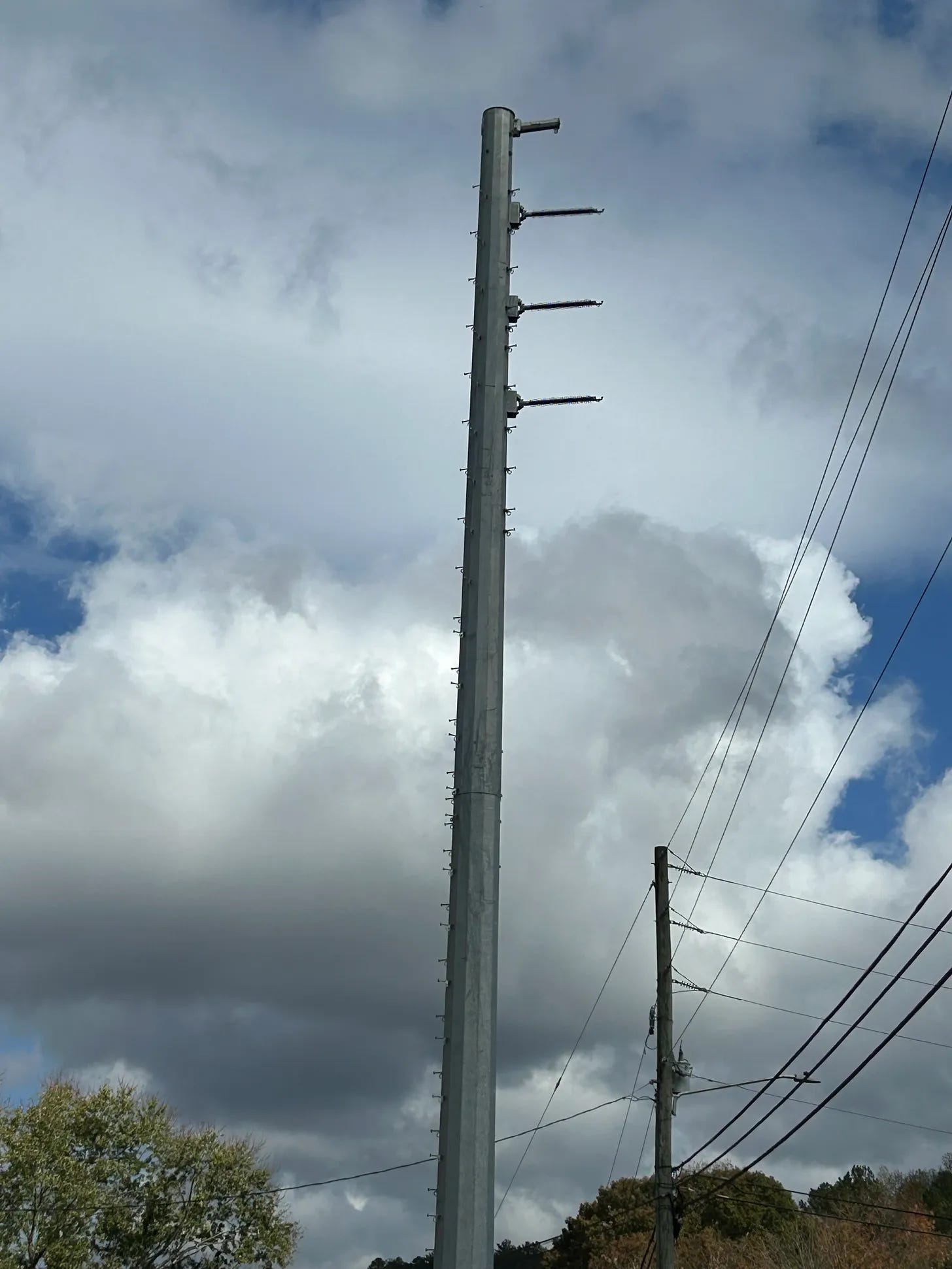Been to north Gilmer lately? The view along 515 is evolving with the clearing of land for the addition of towering poles and electric transmission lines running from East Ellijay to Cherry Log where a new power substation will be built.
More power is needed in terms of local infrastructure. The Cherry Log grid has long been underwhelming. But it’s also likely better infrastructure will attact more develoment. Some call it the “cycle of progress.”
We’re often told north Gilmer is largely protected from over-development by terrain, public lands, and zoning. Enhanced infrastructure may invite new challenges to these previous assumptions.
Meanwhile, the new Mountain Gate subdivision at Back Pine Way breaks a long-standing Gilmer County precedent, as it appears to become the first subdivsion with lots directly abutting 515 (potentially offering “luxury” homes with pristine views of power lines just across the highway).

Additional land along 515 is up for sale or targeted for eventual development by existing investor-owners. But with potentially diminished appeal because of new high-capacity power lines, what sort of developers, investors, or projects will be attracted? The loss of rural ambiance can’t be ignored. Our 515 may become a gateway to the mountains lined not only with power poles, but also strip shopping centers and more subdivisions.
There’s also movement on the public or non-profit side. This includes emerging advocacy for the “economic catalyst” of “trail connectivity” between Ellijay and Cherry Log. Perhaps it was a bit of premature boasting at a recent local planning meeting, but it was blurted out that talks have taken place with the railroad regarding the now unused rail line in terms of potential trail development.

What sort of trail-side economic development could be anticipated? It’s likely more than just recreational use.
A serious trail project may necessitate millions of dollars in public funding, so I’d hope Gilmer and other involved entities would provide project transparency even in early conceptual stages.
If it suddenly feels like change is coming at us from many directions, some of what we’re now seeing has been quietly in the works for years. The path for the power lines, for instance, was negotiated in 2021.
And don’t blame retirees or tourists. Much of what’s blossoming seems akin to the old-guard fast-growth Gilmer mindset that dominated twenty years ago. It’s reemerging now with plans often in partnership with out-of-town and out-of-state developers.
Twenty-some years ago, a building frenzy drove Gilmer through a rapid-fire boom where growth and prosperity seemed unstoppable. Then came a very deep bust. The post-bust recovery took nearly a decade, and the community still carries significant public debt from unchecked and untempered optimism that went bust in a big, big way.
Gotta wonder.
Gilmer appears to be reentering a high-confidence, high-count building cycle.
How big of a growth spurt or surge is evisioned this time?
Twenty years ago, it was predicted we’d have around 60-thousand or more population by 2024. Gilmer’s present population is around 32-thousand.
Do we just get the boom this time? Or do we repeat the whole boom-to-bust cycle?
Which ever comes, how different will Gilmer look or function on the other side?
How much different do we as a community want it to be?






Good article. Change is definitely afoot. The '08 bankers' crash busted the boom that began twenty years ago. That is unlikely to happen again. Meanwhile, Atlanta has morphed into an international city, and the workplace has changed too.
I really want to help solve the affordable housing crisis by creating small, single-family homes that fit the bill. Unfortunately, local and state regulations are driving up development costs faster than anything else.